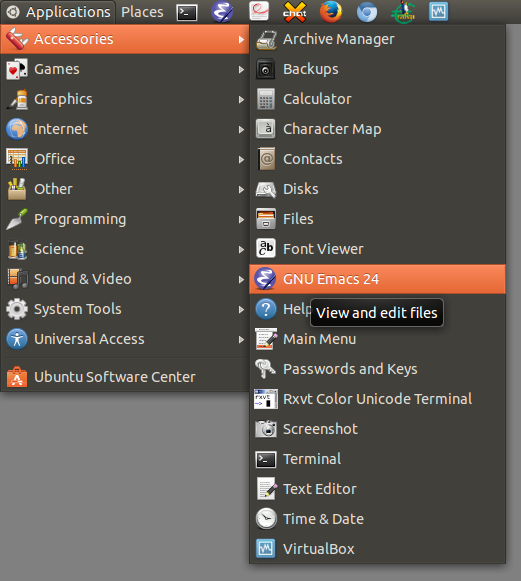

EMACS EXIT SERIES
“C-s-v” is a chord for pressing Ctrl, Command (or Windows), and v at the same time.Ī sequence is a series of chords, pressed and released in a row. For example, “C-x” is a chord for pressing Ctrl and “x” at the same time and then releasing them.

To get started, make sure you have Emacs installed and then follow the Doom installation guide: Ī chord is made up of zero or more modifier keys pressed at the same time as a single non-modifier key.

EMACS EXIT PRO
If you are an Emacs pro and just want to learn about Doom, some of this will be repetitive, and you would probably be better served just to read the README on the Doom project, but if you are looking to started and still feel a bit lost in Emacs, hopefully this will help you out. For anybody looking to really get started being productive with Emacs, I thought it would be helpful to compile the most common functions that I use, and how they are configured in Doom. Doom is very much built around Evil Mode and is meant to make VI users feel at home. For any Emacs purists reading this, you can probably close the tab in disgust now.
EMACS EXIT CRACKED
Thanks to all of my colleagues at Urbint, I’ve finally cracked the first level of concepts and am actually able to be a productive developer all within the bounds of this immense editor (or, *cough* operating system).Īfter spending a while struggling to build my own dotfiles from scratch, the team discovered an amazing package of configuration called Doom (a huge thank you to Henrik Lissner for putting it together). Target with the link or new filename connecting to it.One of the highest learning curves I have ever had to deal with was getting into Emacs. Replace source with the name of the existing file, and You can think of this as if the symbolic link is pointing to theįilename dynamically rather than to the actual information the fileĬontains. Symbolic link file points to a file in a more indirect way. Symbolic (soft) linksĪre created by using the ln command with the -s option. Use symbolic links rather than hard links.To make Emacs do this by default, add thisįor more details on this option, within Emacs type C-h Tell Emacs to make backups by copying the old contents to a newįile and saving the new contents to the same file anytime a file has.Here are two simple ways to get around this problem: The contents of the Emacs buffer you have edited. Emacs saves the edited buffer in a new fileįilenameB both point to the original file before editing,.

You open Emacs withįilenameA to start editing. Here's what happens when you edit a hard-linked file with Emacs: The old and new filenames point to the same piece of The contents of the edited buffer to a new file with the same name asīy default, the ln command makes a direct (hard) link between theĬontents of the file you give it as its firstĪrgument and the filename you give it as the secondĪrgument. Original file by adding a ~ (tilde) to the end, and saves The buffer (or saved from the buffer, if it was a new file) The problemĮmacs creates a backup of your file as it was originally loaded into When you use the ln command to link two filenames to one file. To understand this problem, you have to understand whatĮmacs does when it makes a backup and also what happens You have used the ln command to link to another file, you mayįind that the two files are different after you exit Emacs. Information here may no longer be accurate, and links may no longer be available or reliable. This content has been archived, and is no longer maintained by Indiana University.


 0 kommentar(er)
0 kommentar(er)
